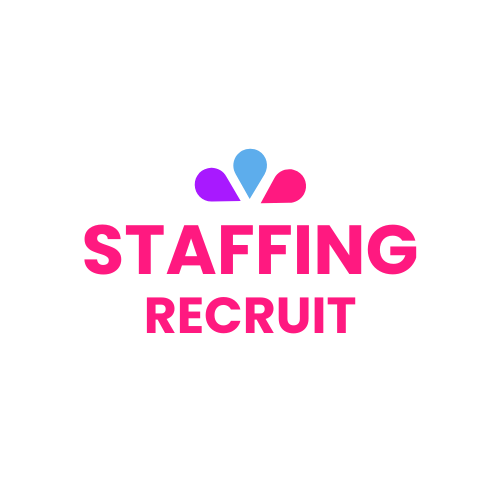Introduction
Building successful healthcare teams requires more than just finding candidates with the right qualifications and experience. The cultural alignment between care providers and their workplace environment plays a crucial role in creating high-performing healthcare organisations.
When care providers share their employer’s values, mission, and operational approach, they become integral components of a cohesive team that delivers exceptional patient care. This alignment – known as cultural fit – influences:
- Employee satisfaction and engagement levels
- Team collaboration and communication
- Patient care quality and outcomes
- Staff retention rates
- Organisational productivity
Research shows that healthcare organisations prioritising cultural fit during their hiring process experience stronger team dynamics and reduced turnover rates. These benefits extend beyond the workplace, directly impacting patient satisfaction and healthcare delivery effectiveness.
A strategic approach to ensuring cultural fit helps healthcare organisations build resilient teams that work harmoniously toward common goals while maintaining high standards of patient care.
Understanding Cultural Fit
Cultural fit in healthcare settings represents the harmonious alignment between a care provider’s personal values, work style, and professional goals with the organisation’s established culture and mission. This alignment extends beyond basic job qualifications to encompass shared beliefs about patient care, professional ethics, and workplace dynamics.
Key Elements of Cultural Fit in Healthcare:
- Shared commitment to patient-centered care
- Alignment with organisational values and mission
- Compatible communication styles
- Similar approaches to problem-solving
- Matched expectations for work-life balance
A strong values alignment creates a foundation for long-term success. When care providers share their organisation’s core principles, they demonstrate higher levels of job satisfaction and stronger commitment to their roles. This alignment manifests in various ways:
- Enhanced team collaboration
- Improved patient care delivery
- Increased workplace engagement
- Greater job satisfaction
- Higher retention rates
Research shows that healthcare organisations with strong cultural alignment report up to 50% higher employee satisfaction rates. Care providers who feel connected to their organisation’s values typically stay in their positions 2-3 times longer than those who experience cultural disconnect.
The impact of cultural fit extends to daily operations. Care providers who align with their organisation’s culture:
- Adapt faster to new protocols
- Build stronger relationships with colleagues
- Show greater resilience during challenging times
- Participate more actively in quality improvement initiatives
- Demonstrate higher levels of professional growth
These benefits create a positive cycle where satisfied employees contribute to a stronger organisational culture, which attracts like-minded professionals and maintains high standards of patient care.
The Consequences of Poor Cultural Fit
Research from the Society for Human Resource Management reveals that 50% of senior outside hires fail within 18 months, with poor cultural fit cited as the primary reason. This statistic underscores a critical challenge in healthcare recruitment.
The financial impact of poor cultural fit manifests in multiple ways:
- Direct Replacement Costs: $3,000 to $6,000 per hire for entry-level positions
- Lost Productivity: 100-300% of the replaced employee’s salary
- Training Investments: Average of $1,200 per employee lost
- Recruitment Expenses: Additional advertising, screening, and interviewing costs
Beyond monetary considerations, misaligned cultural fits create ripple effects throughout healthcare organisations:
Team Dynamics Disruption
- Decreased collaboration among staff
- Reduced knowledge sharing
- Increased workplace conflicts
- Fragmented communication patterns
Morale Impact
- Higher stress levels among remaining staff
- Reduced engagement in patient care
- Increased burnout rates
- Diminished trust in leadership decisions
A study by PwC found that 84% of healthcare executives consider cultural fit issues as directly responsible for failed hires. These unsuccessful placements often lead to a cycle of continuous recruitment, creating instability in patient care delivery and team cohesion.
Healthcare organisations experiencing high turnover due to poor cultural fit report:
- 15% decrease in patient satisfaction scores
- 20% reduction in team productivity
- 25% increase in medication errors
- 30% rise in workplace incident reports
These statistics emphasise the need for healthcare organisations to prioritise cultural alignment during their hiring processes.
Defining Organisational Culture
A well-defined organisational culture serves as the foundation for successful cultural fit hiring practices in healthcare settings. Here’s how healthcare organisations can effectively articulate and document their culture:
Documentation Steps:
- Create detailed written descriptions of workplace norms and expectations
- Develop specific examples of how values translate into daily actions
- Establish clear protocols for decision-making processes
- Record successful conflict resolution methods
- Document communication preferences and standards
The mission statement acts as a compass for organisational direction. An effective healthcare mission statement should:
- Clearly state the organisation’s purpose
- Define the target patient population
- Outline the approach to care delivery
- Reflect commitment to quality and innovation
Core values form the behavioral framework within a healthcare organisation:
- Patient-Centered Care: Prioritising patient needs and experiences
- Excellence: Setting high standards for medical care
- Integrity: Maintaining ethical practices
- Collaboration: Fostering teamwork across departments
- Innovation: Embracing new healthcare solutions
Operational practices must align with stated cultural elements through:
- Structured onboarding programs reflecting organisational values
- Regular team meetings emphasising cultural priorities
- Performance metrics tied to cultural objectives
- Recognition systems rewarding value-aligned behaviors
- Professional development opportunities supporting cultural growth
These elements create a cohesive cultural framework that guides hiring decisions and shapes the workplace environment. Healthcare organisations implementing these structured approaches experience stronger team alignment and improved care delivery outcomes.
Assessing Cultural Fit During Hiring
Effective cultural fit assessment requires strategic interview techniques and comprehensive evaluation methods. Here are key practices for identifying candidates who align with your organisation’s values:
Strategic Interview Questions
- Ask scenario-based questions that reflect real workplace situations
- Request examples of past experiences handling cultural challenges
- Explore candidates’ preferred work environments and management styles
- Discuss their interpretation of your organisation’s core values
Behavioral Interview Techniques
- Use the STAR method (Situation, Task, Action, Result) to evaluate past behaviors
- Present hypothetical scenarios related to workplace culture
- Assess communication styles through role-playing exercises
- Observe non-verbal cues during interactions
Professional Reference Verification
- Contact references from different organisational levels
- Ask specific questions about the candidate’s:
- Team collaboration abilities
- Adaptability to workplace culture
- Conflict resolution approaches
- Leadership potential
Team Integration Assessment
- Schedule candidate interactions with potential team members
- Organise informal meet-and-greets during the interview process
- Conduct panel interviews with cross-functional team representatives
- Gather feedback from all staff members who interact with the candidate
The assessment process should incorporate multiple touchpoints and perspectives. Documentation of cultural fit evaluations helps maintain consistency across all candidates and provides valuable data for future hiring decisions. Regular review and refinement of these assessment methods ensure their effectiveness in identifying candidates who will thrive in your organisation’s unique culture.
Continuous Evaluation Throughout the Candidate Journey
The assessment of cultural fit is not confined to the initial interview process. A comprehensive evaluation strategy involves multiple touchpoints throughout the candidate’s journey, which can significantly enhance the chances of achieving a successful candidate-company alignment.
Pre-Interview Stage
- Review of candidate’s social media presence
- Initial phone screening focused on values alignment
- Pre-employment assessments measuring cultural preferences
During Interview Process
- Job shadowing opportunities
- Team lunch or informal meetings
- Department tours with potential colleagues
Post-Interview Evaluation
- Structured feedback forms from all interacting staff members
- Candidate experience surveys
- Documentation of observed behaviors and interactions
Organisations stand to gain from establishing clear feedback mechanisms where candidates can share their perspectives on the organisational culture. This two-way communication aids both parties in making informed decisions about potential fit.
A systematic approach to gathering candidate feedback includes:
- Anonymous surveys after each interaction
- Open discussions about cultural expectations
- Regular check-ins during the hiring process
- Structured debriefing sessions with hiring teams
These ongoing assessments provide valuable insights into both the candidate’s alignment with the organisation and potential areas for improving the hiring process. It’s crucial, however, to avoid unpaid assignments as part of your hiring process, as this could sour the candidate experience. Implementing effective candidate relationship management strategies can also improve these ongoing evaluations and ultimately lead to better hiring outcomes.
Balancing Cultural Fit with Diversity Goals
Creating an inclusive environment requires a delicate balance between maintaining cultural alignment and embracing diverse perspectives. Organisations must recognise that cultural fit doesn’t mean hiring identical personalities or backgrounds – it means finding candidates who share core values while bringing unique viewpoints to the team.
Key strategies for integrating diversity initiatives:
- Implement blind resume screening to reduce unconscious bias
- Create diverse interview panels to provide multiple perspectives
- Develop standardised evaluation criteria focused on values rather than personal characteristics
- Establish mentorship programs to support diverse talent integration
A diverse healthcare team brings enhanced problem-solving capabilities and improved patient care outcomes. Research shows that patients receive better care when treated by providers who understand their cultural backgrounds and unique needs.
Benefits of balanced cultural fit and diversity:
- Increased innovation through varied perspectives
- Enhanced cultural competency in patient care
- Stronger team adaptability
- Broader range of solutions to complex healthcare challenges
Organisations can maintain their cultural identity while fostering diversity by focusing on shared values such as:
- Commitment to patient-centered care
- Professional growth mindset
- Collaborative approach to healthcare
- Dedication to evidence-based practice
Success in this balance creates teams that are both cohesive and dynamic, leading to improved patient satisfaction and better health outcomes across diverse populations.
Conclusion
Taking a strategic approach to ensure cultural fit when hiring care providers brings significant long-term benefits to healthcare organisations. When done well, a cultural alignment strategy:
- Reduces turnover costs
- Strengthens team dynamics
- Enhances patient care quality
- Builds sustainable organisational growth
Organisations that prioritise cultural fit in their hiring processes create resilient healthcare teams capable of delivering exceptional care while maintaining high job satisfaction. The investment in comprehensive cultural assessment methods pays off through improved retention rates and operational efficiency. Healthcare providers who find their values aligned with their workplace culture become powerful advocates for both patient well-being and organisational success.

